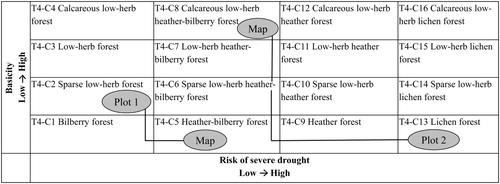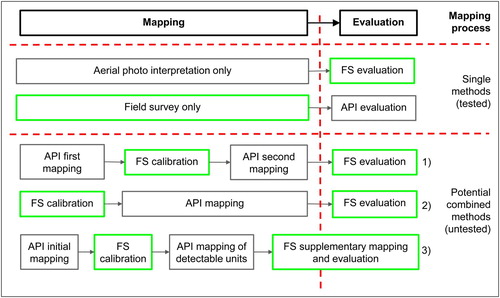Figures & data
Table 1. Aerial photographic interpretation and field survey by parameters most often used to define an applicable method for a given project
Fig. 1. Study area with four rectangular study sites on Hvaler Municipality, south-east Norway (Maps from Geonorge (N2000 maps and AR5 area cover), WGS 1984 UTM Zone 32N, rotation -5.1 degrees)

Table 2. FragStats metrics used to describe differences between the vegetation maps, and the meaning of each metric
Table 3. Criteria used for partitioning plot and map relations into three categories
Fig. 2. The ecosystem units for forest in NiN 2.0 as defined by the gradients ‘Risk of severe drought’ and ‘Basicity’; two examples of ‘different classification’ with ecological distances of two and five

Table 4. Grouping of ecosystem units present in study areas, with ecosystem unit codes and names
Fig. 3. Ecosystem unit maps for sites API1 and FS1N; with different sites (coordinates WGS 1984 UTM Zone 32N, rotation -5.1 degrees)



